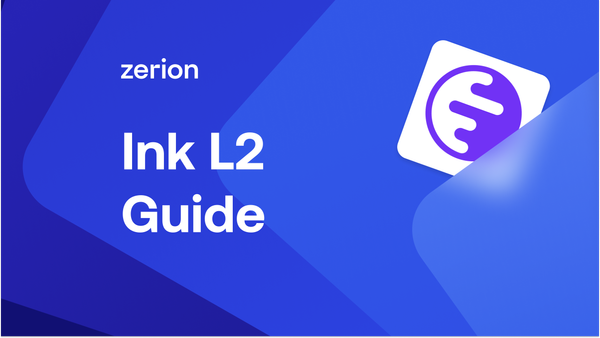Layer-2 (L2) networks have become essential for scaling Ethereum. In addition to general-purpose L2s like Arbitrum or Base, specialized networks are emerging for specific use cases. Among these new chains is Ink, an L2 network developed by Kraken for DeFi. In this guide, we'll explore what Ink is, what makes it special, and how you can get started.
What is Ink by Kraken?
Launched in October 2024, Ink is an Ethereum Layer-2 network developed and maintained by Kraken, one of the world’s leading cryptocurrency exchanges with over 10 million users. Built on the OP Stack as part of the Superchain, Ink aims to bring a seamless, secure, and scalable Layer-2 experience to users and developers alike. In January 2025, Ink became the first Superchain network beyond OP Mainnet to achieve Stage 1 decentralization, marking a major milestone in its commitment to progressive decentralization and trustless infrastructure.
Kraken developed Ink to simplify the user experience in DeFi while helping to scale Ethereum and benefitting from its security. To achieve this, Ink leverages Optimism's open-source OP Stack, a rollup technology that bundles multiple transactions off-chain and submits a single summary to Ethereum’s mainnet. This approach drastically reduces congestion, increases throughput, and maintains high security by relying on Ethereum’s proven model.
Ink’s architecture involves sequencers that batch transactions, validators who verify transaction validity, and robust fraud-proof mechanisms ensuring the integrity of every transaction processed.
Key Features and Advantages
All Layer 2 chains offer low fees and fast transactions. Of course, Ink does that: smol gas and under 1-second block times.
But it also brings something new:
- DeFi from a proven OG. Founded in 2011, Kraken is a well-respected US-based exchange that proved its commitment to the industry. You can expect a serious ecosystem, not a money grab.
- Onramp to onchain user experience. Kraken and Ink are positioned to build a seamless connection between an exchange, their own self-custodial wallet, and dapps.
- Interoperability. Yet Ink is not just Kraken. It's part of Optimism's Superchain and the broader Ethereum ecosystem, so liquidity and users can freely move between different chains.
How to Get Started with Ink
Getting started with Ink is straightforward and accessible:
- Set up a wallet. Begin by setting up a compatible wallet such as Zerion Wallet, which provides intuitive access to Ink, letting you seamlessly manage your assets and engage with dApps.
- Bridge ETH. To use Ink, bridge some ETH from Ethereum’s mainnet or L2s. For now, you can use Optimism's Superbridge. Soon Zerion will add bridging to Ink right in the wallet.
- Mint NFT. Get a commemorative NFT to celebrate the integration of Ink mainnet in Zerion Wallet.
- Interact with DeFi on Ink. On Ink, you can already use some of the best-known DeFi protocols, including Uniswap, Curve, and Morpho, to name a few. Providing liquidity on these platforms can be lucrative.
Build Zerion API
Developers can also leverage Zerion API to integrate Ink onchain data effortlessly into their products and services. Zerion API’s endpoints offer the same detailed wallet, transaction history, and other data that you see in Zerion.
Future of Ink: DeFi’s Next Chapter
Kraken is committed to the ongoing development and expansion of Ink, actively planning enhancements to further enrich both user and builder experience.
Future developments include broader integrations with decentralized finance (DeFi) applications, comprehensive support for builders, and deeper interoperability within the Ethereum ecosystem. Ink remains dedicated to continuous innovation, driven by active community feedback and evolving user needs.
Time to Act
Discover the cutting edge of DeFi today—explore Ink by Kraken with Zerion Wallet.

